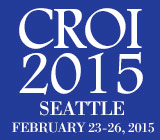 An ongoing study of gay mixed-HIV status couples has seen no transmissions within the couples at its interim two-year analysis, according to aidsmap. In May 2012, researchers from the Opposites Attract study began recruiting gay male couples in which one partner is HIV positive and the other HIV negative. There were no restrictions as to whether the HIV-positive men had an undetectable viral load or whether the men used condoms. The investigators presented their findings at the 2015 Conference on Retroviruses and Opportunistic Infections (CROI) in Seattle.
An ongoing study of gay mixed-HIV status couples has seen no transmissions within the couples at its interim two-year analysis, according to aidsmap. In May 2012, researchers from the Opposites Attract study began recruiting gay male couples in which one partner is HIV positive and the other HIV negative. There were no restrictions as to whether the HIV-positive men had an undetectable viral load or whether the men used condoms. The investigators presented their findings at the 2015 Conference on Retroviruses and Opportunistic Infections (CROI) in Seattle.
This interim analysis concerns the first 152 couples in the study who had at least one study visit after their initial enrollment. The study began in Sydney, Brisbane and Melbourne, Australia, and has since expanded to Cairns, Australia, Bangkok and Rio de Janeiro.
At the outset, 84 percent of the HIV-positive men were taking antiretrovirals (ARVs), and nearly all of these men had undetectable viral load, making them vastly less likely to pass on the virus.
Fifty-eight percent (88 out of 152) of the couples reported having intercourse without a condom a cumulative 5,905 times, an average of 67 times each. The HIV-negative partner reported being the insertive partner (the top) for 60 percent of these occasions and the receptive partner (the bottom) the remaining 40 percent. Four percent (237) of the acts of condomless intercourse were reported to occur when the HIV-positive partner had a detectable viral load.
Thus far, the study has shown no genetically matched HIV transmissions within the couples. However, considering that 43 percent of the couples said they were not monogamous, and the fact that 11 percent of the HIV-positive partners and 7 percent of the HIV-negative men have contracted a sexually transmitted infection during the study, there may have been HIV-negative men who contracted the virus from men outside of their romantic partnerships. The researchers have not yet provided any details on such possible transmissions, however.
The researchers calculated that, at this point in their study, the expected annual HIV incidence rates, in terms of transmissions per 100 people, is between zero and 4.06 cases for any act of condomless intercourse, zero to 6.46 cases when the HIV-negative partner is the bottom for condomless intercourse, or zero and 184 cases for any act of condomless intercourse when the HIV-positive partner has a detectable viral load. The latter estimate is particularly uncertain given the very small amount of data available about condomless intercourse when the HIV-positive partner has a detectable viral load.
To read the aidsmap story, click here.
To read the conference abstract, click here.
Advertisement
Advertisement
Advertisement






Comments
Comments